How to Lay Turf on Existing Grass?
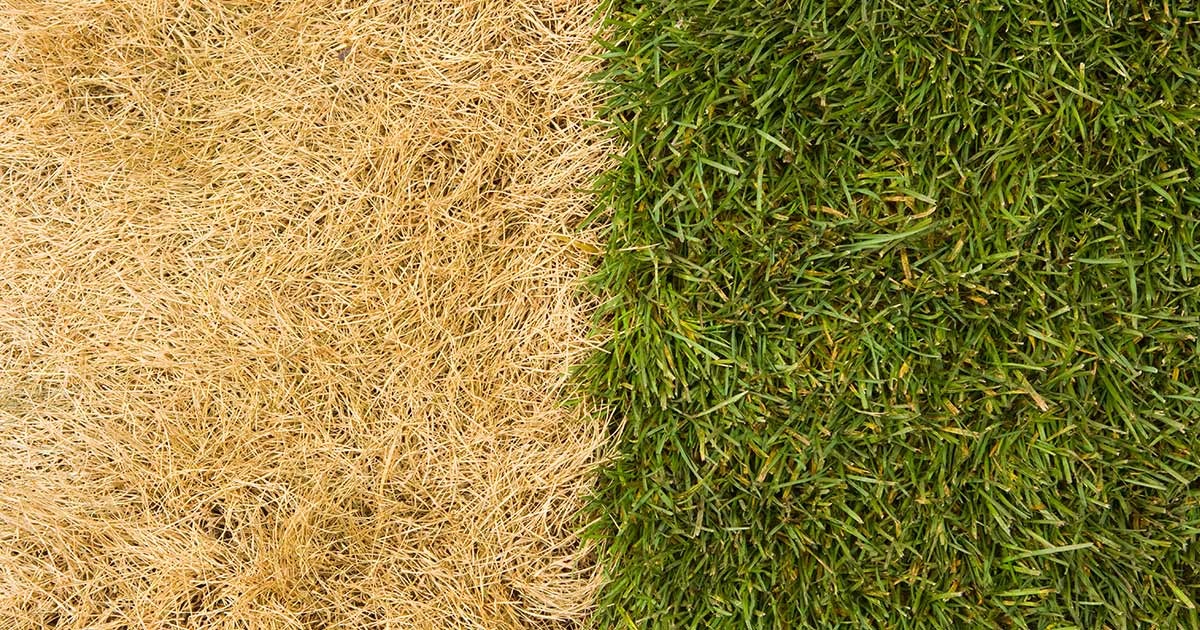
5 March 2024
Whilst laying new turf onto existing grass is possible, it is not recommended as this will lead to issues in the long run and here’s why!
What to consider when laying new turf over old grass!
Laying your new turf on top of an existing lawn can be detrimental to the establishment of your new turf. Here’s some points as to why!
- Turf requires at least 50-100mm of friable good quality topsoil to grow its roots into. Laying new turf onto your existing soil can be okay but you may need to complete a Ph test to ensure your soil quality is good or you may need to enhance existing soil.
- Laying new turf on top of existing lawn and weeds can cause them to grow up and through your new turf. This will cause contamination to your new turf and be an up hill battle to get clean.
- Your newly laid turf could shallow root, causing it to dry out quickly in hot and dry weather.
What’s Wrong With Your Existing Turf?
Let’s give you a burst of knowledge to see if you can identify what’s wrong with your existing lawn!
Hydrophobic Soil
If your lawn is suffering from dry patches or is hydrophobic a wetting may be needed to lay turf.
Hydrophobic lawns will pool water at the soil’s surface and will struggle to let the moisture soak down into the soil base. Dry patches or heat stressed turf can present in patches rather than across the whole lawn.
Wetting agents are best applied when the temperatures are cooler, either in the morning or afternoon. Repeated applications can be made every few months on an as needed basis.
A great product to use to help with Hydrophobic Soil is Lawn Soaker.
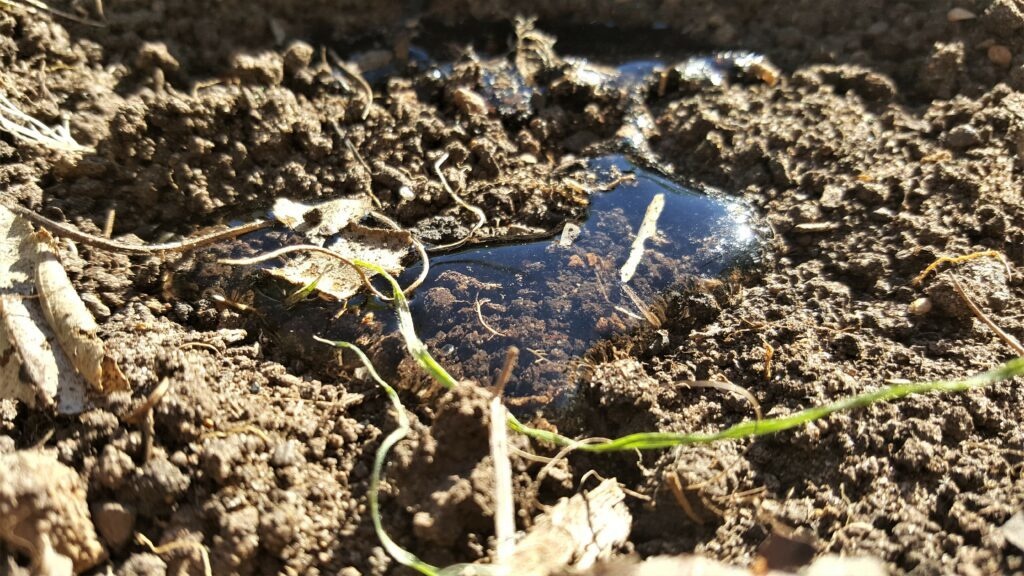
Compacted Soil
Soil compaction can occur as a result from high foot traffic in an area, from kids or pets, or in other frequently used areas. Heavier clay soils are very tight and bind together making compaction a common problem.
When compaction occurs, it can hinder the lawns’ ability to grow deeper into the soil. It can limit the amount of nutrients and water that can reach the root of your lawn.
To help alleviate heavily compacted areas aerate with a garden fork, aerating sandals or a tyne aerator.
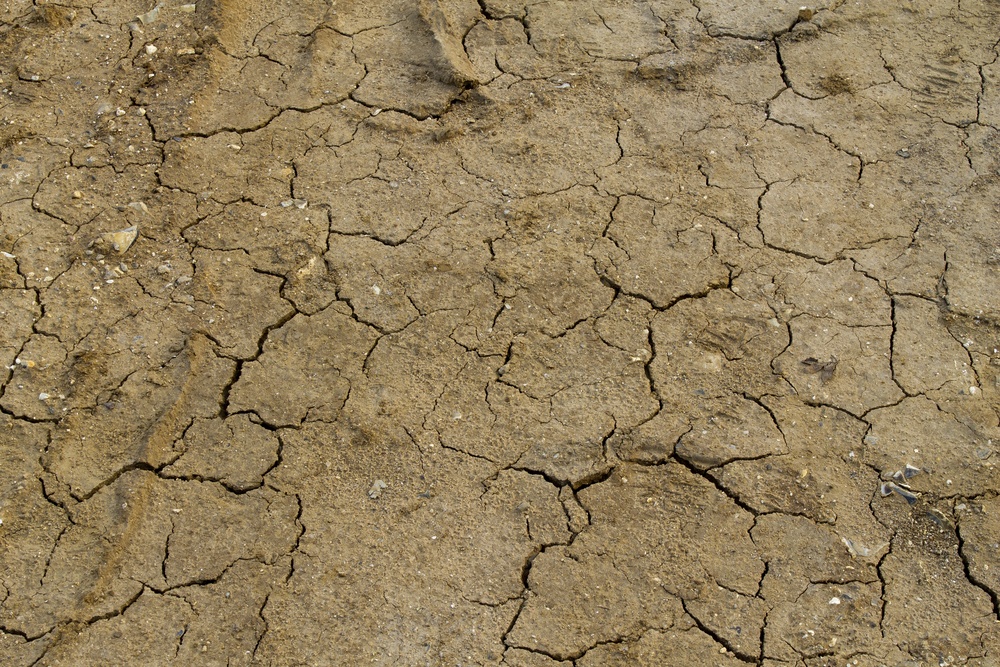
Weeds
If you mow your lawn correctly and frequently, you should manage to avoid the invasion of most pesky weeds. But if you have found that some of these undesirable weeds are in your lawn, then there is a few methods for weed removal.
Here’s some options of weed removal:
- Hand Removal
- Post-emergent Herbicide (Weed Killer)
- Pre-emergent Herbicide
- Organic Options
To read more view the Lawn Weed Removal Guide here.
Pests
There are three types of lawn grub that eat the leaf of lawns in South East Queensland. These are; Army Worm, Sod Web Worm and Cut Worm. These are all larvae of small moths that are active from spring to autumn but are more common in the wetter months from December to May. Lawn grubs prefer healthy, lush turfgrass, so be on guard during this time.
Treatments include:

Humps & Hollows
In most cases top dressing is done to correct poor preparation and lack of soil underneath or to fill in low spots and correct uneven areas in the lawn. If your lawn is well fertilised, healthy and even, then you don’t need to worry about top dressing.
Top dressing brings many benefits to a lawn that is looking a little lacklustre, including helping to reduce the accumulation of dead grass clippings and stems, known as ‘thatch’. It helps to increase nutrient retention, improves drainage, and increases disease and pest resistance.
Topdressing to Improve Levels
For top-dressing material for level improvement, we always like to use washed or screened sand. It doesn’t compact quite as hard as brickies sand. It is generally easier to screed and level due to the lower clay and silt content and reduces the likelihood of the surface crusting and becoming hydrophobic.
Top Dressing for Nutrients
This type of top dressing application places a thin layer of organic soil mixture over the area of your lawn and adds organic, natural nutrients and minerals. You would apply a top dressing for nutrients if your lawn is in need of a boost as it will encourage the production of new grass shoots and result in a thicker lawn with the added benefit of then hindering moss and weed infestations.
Applying a top dressing will introduce materials to your soil that will improve drainage, allow the soil to exchange gases with the atmosphere more effectively while also promoting the development of the soil’s micro-flora and micro-fauna needed to break down thatch and grass clippings. Top dressing matter will feed the earthworms too, releasing nutrients into the soil.
An added bonus is that top dressing allows the soil to retain moisture better during drier conditions as well as allowing excess moisture to drain away during heavy rainfall.
Bags of top dressing mixtures are readily available from turf lawn care centres and nurseries and provide all the relevant handling and application information. Work out the size of your lawn before you buy; as a general guide a 2kg bag will be enough to top dress a square metre of lawn.
Mow your lawn the day before applying the top dressing and rake up and remove any debris to allow the nutrients to effectively penetrate into the soil. Firstly shovel the top dressing into even piles around the area of lawn and then rake the mixture into the lawn until it looks as if the lawn has been lightly dusted and the tops of the lawn plants are above the dressing. Rake in a figure eight motion so that the top dressing mixture is spread evenly. Hose the lawn thoroughly so that the dressing is barely visible.
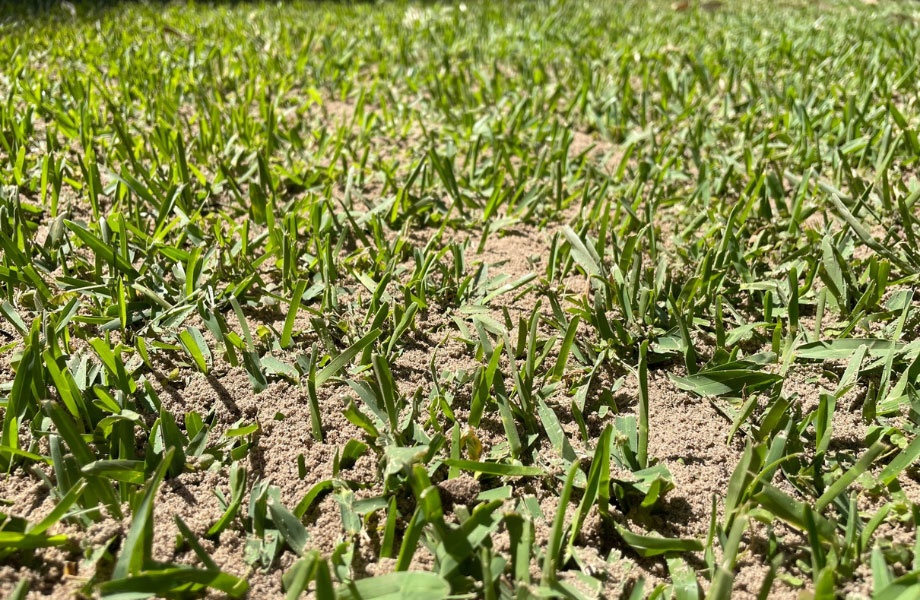
Diseases
Controlling diseases in your lawn! Purchase our broad spectrum fungicide Mancozeb to help treat most lawn diseases.
Anthracnose
Anthracnose diseases are common and destructive problems in golf course putting greens established with creeping bentgrass or annual bluegrass. Anthracnose may develop as a foliar blight, in which the turf grass leaves are infected, or a basal rot, which attacks the leaf sheaths, crowns, and stolons of the plant.
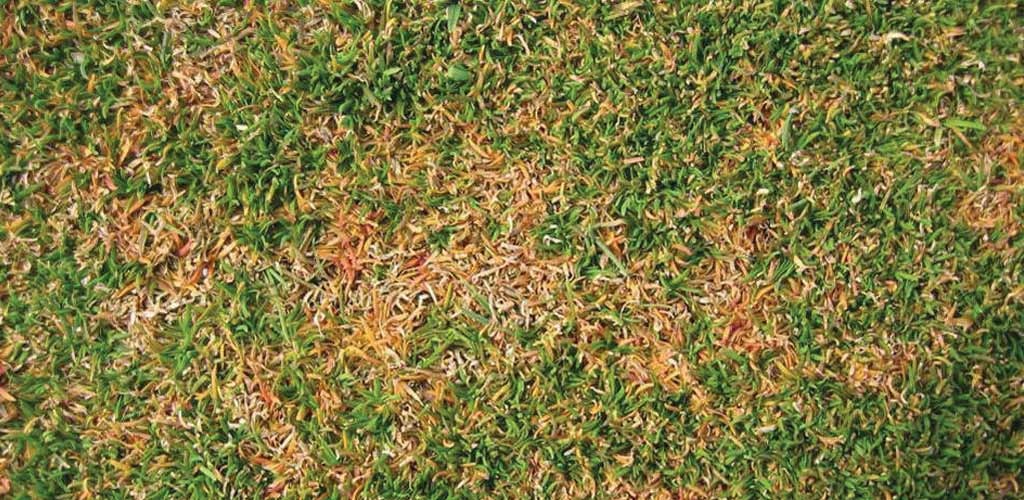
Brown Patch
The causal pothogen of Brown Patch is Rhizoctonia solani. Rhizoctonia solani is a soil borne fungus which can be found in most soils and is known as a cause of disease in both established and seedling turfgrasses. The disease does not produce spores, but instead spreads rapidly by mycelial contact. The disease is disseminated via movement of sclerotia which are produced and remain in thatch material.
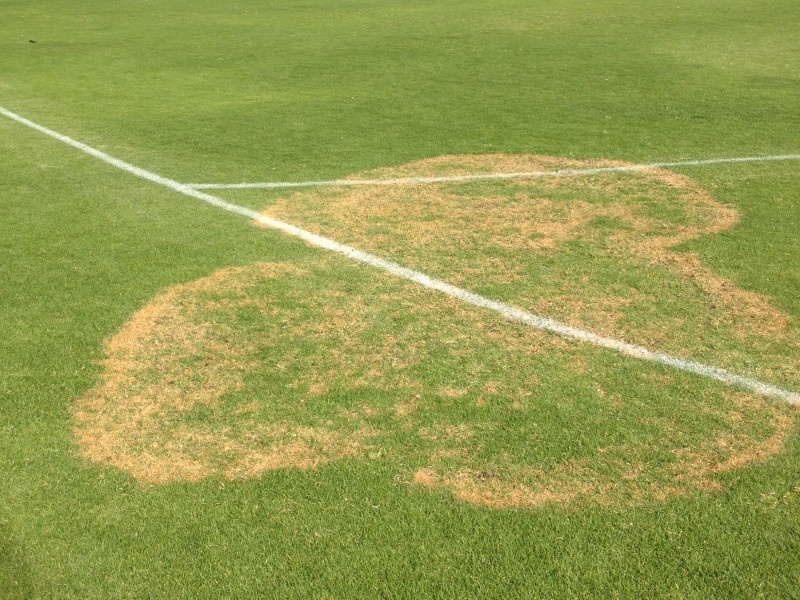
Dollar Spot
Dollar Spot is a turf disease that effects many different turf varieties. As its name suggests, the appearance of this disease is identifiable as dollar sized spots of discoloured grass appearing within your lawn. Up close, the discoloured leaves will have straw-coloured lesions with red/brown edges to them. If left to spread the spots will get larger and form bigger patches of affected grass.
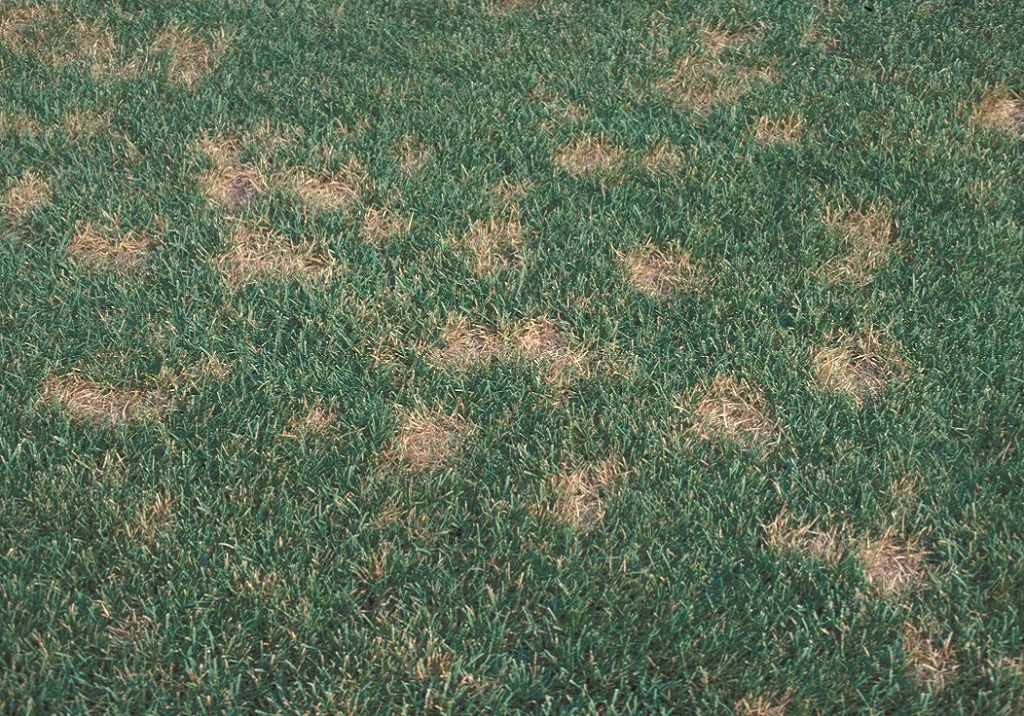
Fusarium
Fusarium patch is a type of fungal disease in turf caused by Microdochium nivale. Fusarium patch appears as circular, water-soaked spots, usually 5cm in diameter.
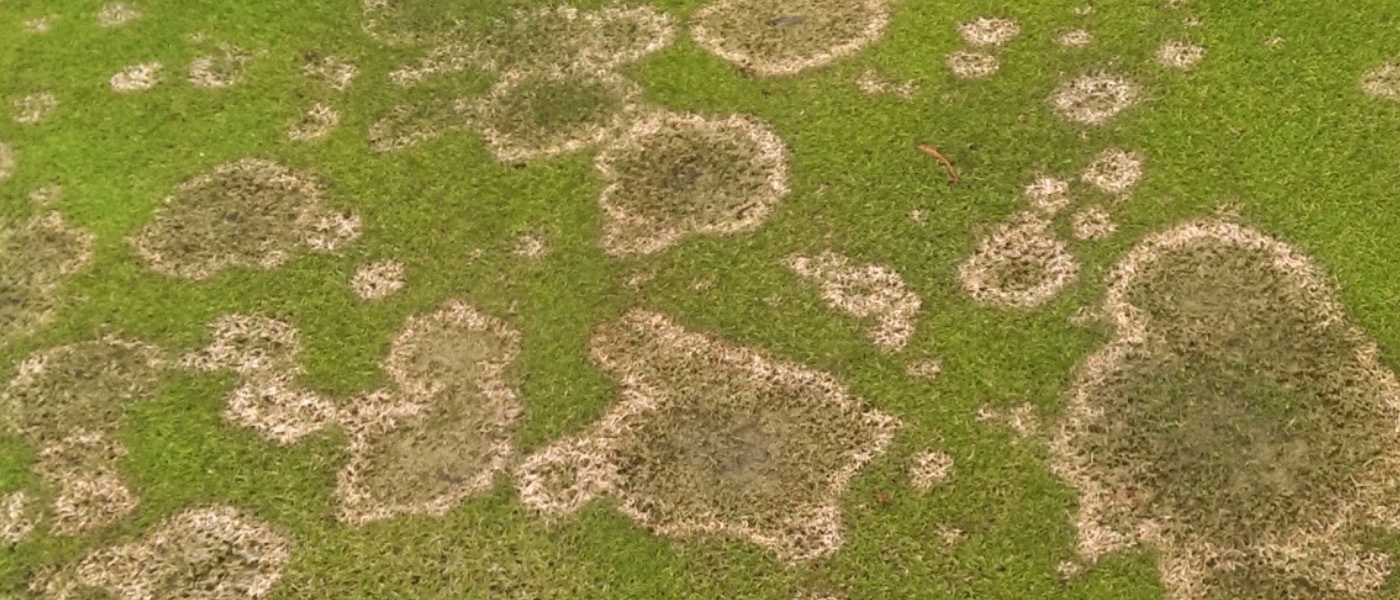
Getting the proper soil preparation
- To prepare your soil for turf spray out any existing vegetation with Glyphosate. Please ensure to follow the labeled rates to allow for a total kill. Allow a minimum of two days for the chemical to work on the plant. A second application may be required.
- Remove any existing grass and weeds or cultivate/rotary hoe this into the existing soil base.
TIP:
- For best results, cultivate, till or spade the area to a depth of approximately 150mm. This would be an ideal time to add in organic matter or soil amendments that may have been required from your earlier pH test.
- Add in any turf underlay (sandy loam) required to make sure you have the best base for your new lawn. Always be sure to double-check your pH levels to ensure it is still within the appropriate range of 5.5 to 7.
- Eliminate any drainage problems by having the soil slope away from foundations, footpaths, garden beds etc.
- Rake and smooth the soil removing any rocks, roots or large clods.
- Roll the area with a lawn roller this will help firm the soil and reveal low areas that need more turf underlay soil.
- Keep the grade 20-25mm below sidewalks and driveways for the turf to sit into.
- Screen off the soil to provide a smooth surface, roll then screen again. Your soil needs to be compacted enough that when you walk on it you only leave a small footprint.
- Lightly wet the soil to minimise dust and provide a moist base for your turf, but not too wet that it turns to mud.
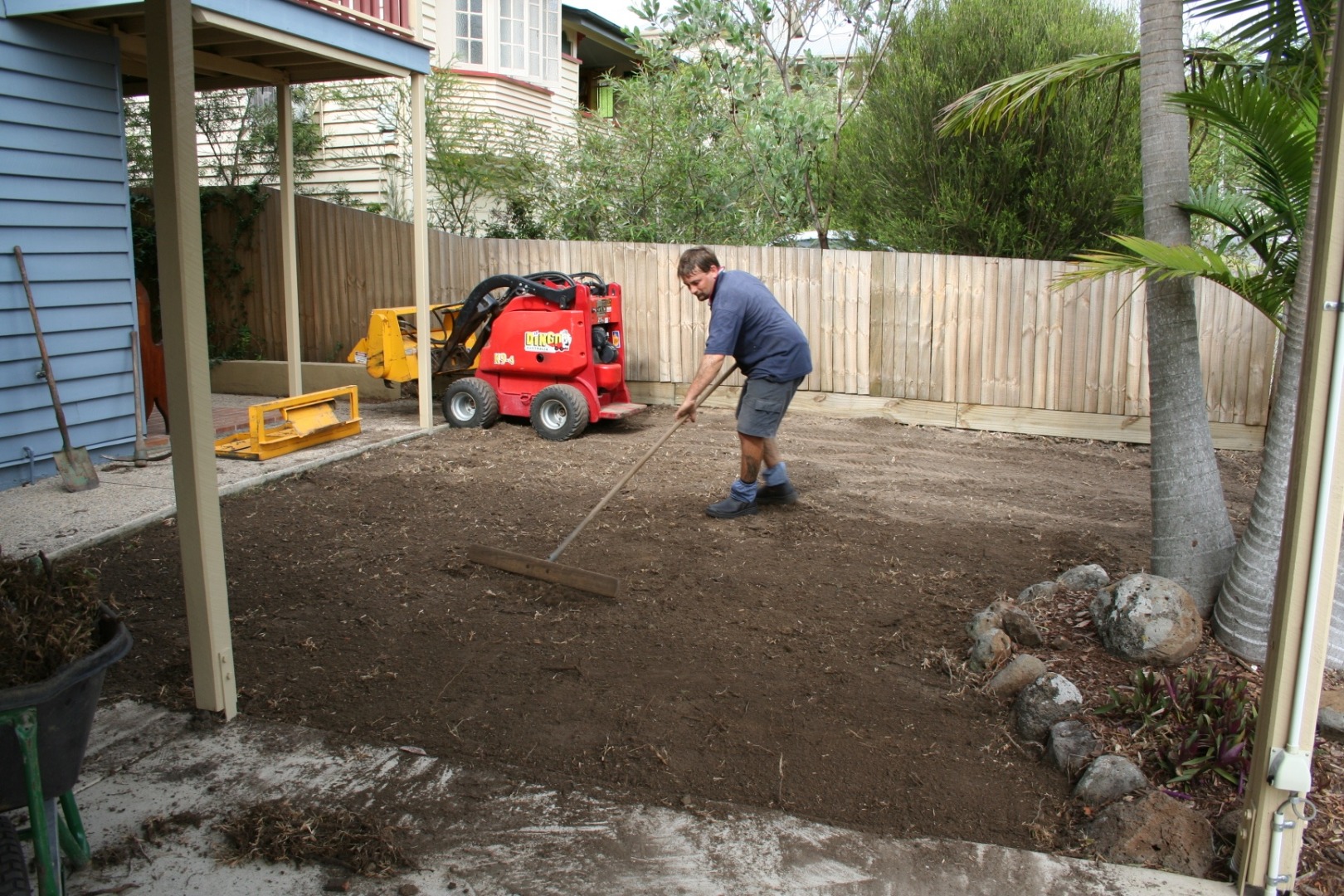
Turf Installation onto your freshly prepared soil
- Apply a pre turfing fertiliser such as Lawn Launcher which contains fast and slow release fertiliser and water crystals. Rake this into the surface.
- Install your instant turf as soon as the turf arrives.
TIPS:
- When turf laying, check that the soil is not too hot prior to laying turf. Lightly wet the soil down to cool it off.
- In hot weather, make sure you water each section as you lay to avoid the turf rolls drying out.
- Begin lawn installation at the furthest point and along the longest straight edge such as a driveway or footpath. Stagger the joints in each row in a brickwork pattern, butting and pushing the turf edges against each other tightly. If laying turf on a slope, we recommend laying turf across the slope for best results.
- Use a large sharp knife, garden shears or sharp spade to cut turf or trim around tress or edges.
- After you’ve finished laying your turf, roll the entire area, this will improve the contact between the freshly laid turf and soil removing air pockets and help with levelling.
Days 1-7
- Watering twice daily in the morning and afternoon to the point of run off. In extreme heat conditions, you may need to water a third time to keep the leaf moist.
Days 7-14
- IF TURF PULLS UP – Watering twice daily, giving your new lawn a good soak.
- IF TURF WON’T PULL UP – Watering every morning.
After First Mow
- Watering once every 2nd day or as required preferably in the morning.
TIP:
- Whenever you finish a watering cycle, dunk a tea towel in water and hang it on the clothes line. Once the towel is dry, your lawn is ready for another drink.
The information provided above is a guide ONLY, please consider your current climate, weather conditions & temperatures when using this guide.
Now it’s time to enjoy your beautiful new lawn. If you have any questions regarding the ongoing care of your turf reach out to our friendly staff! They’d be happy to help!